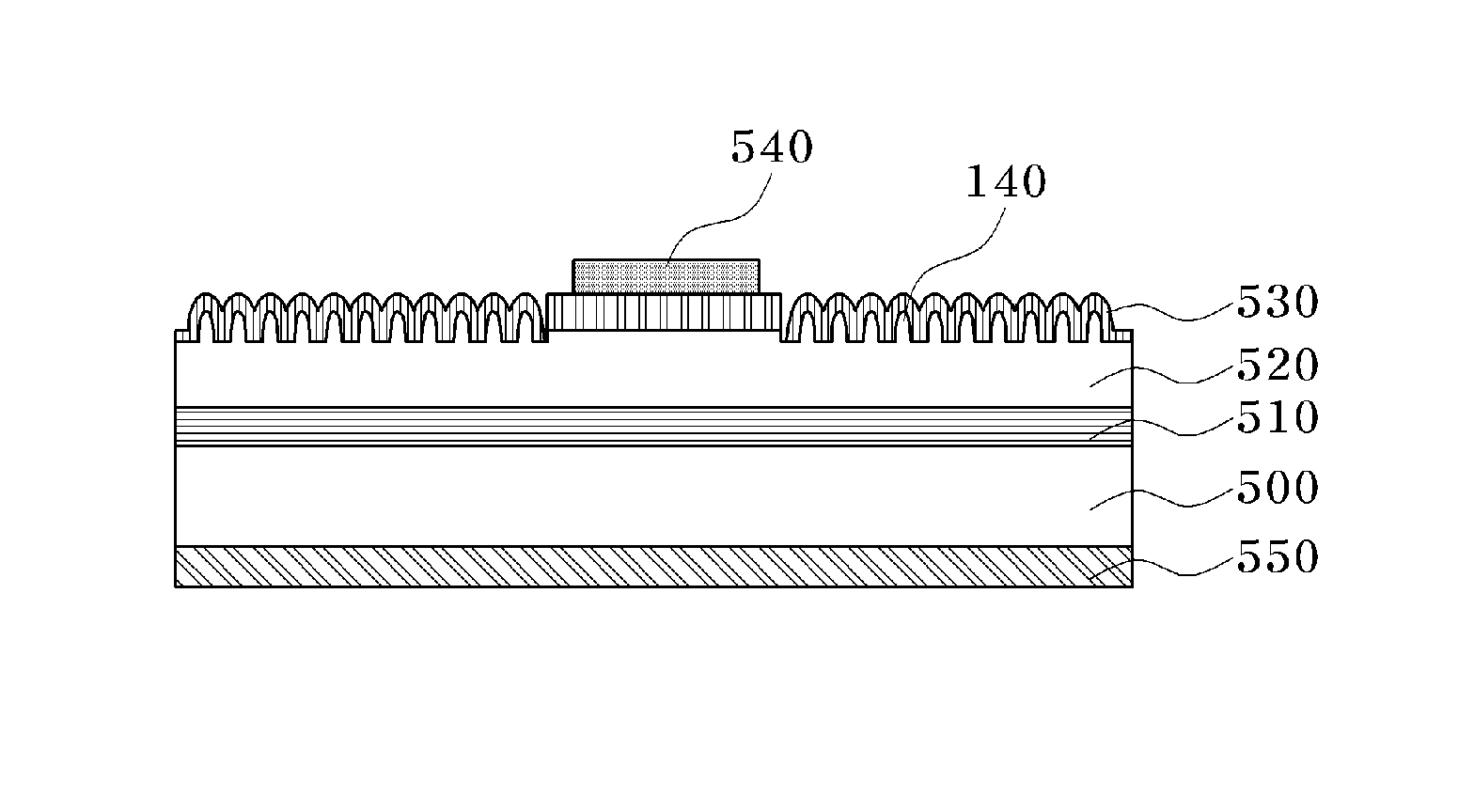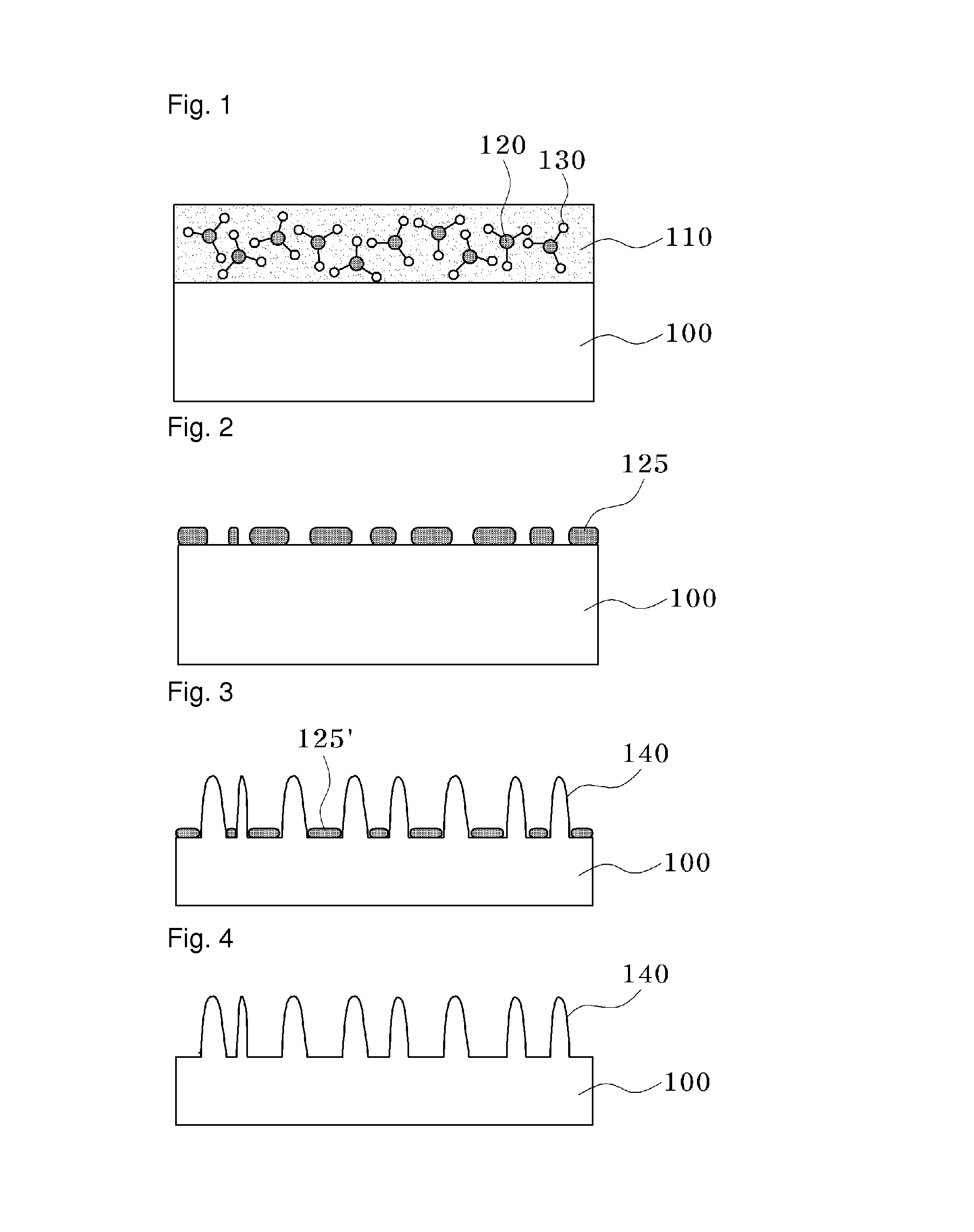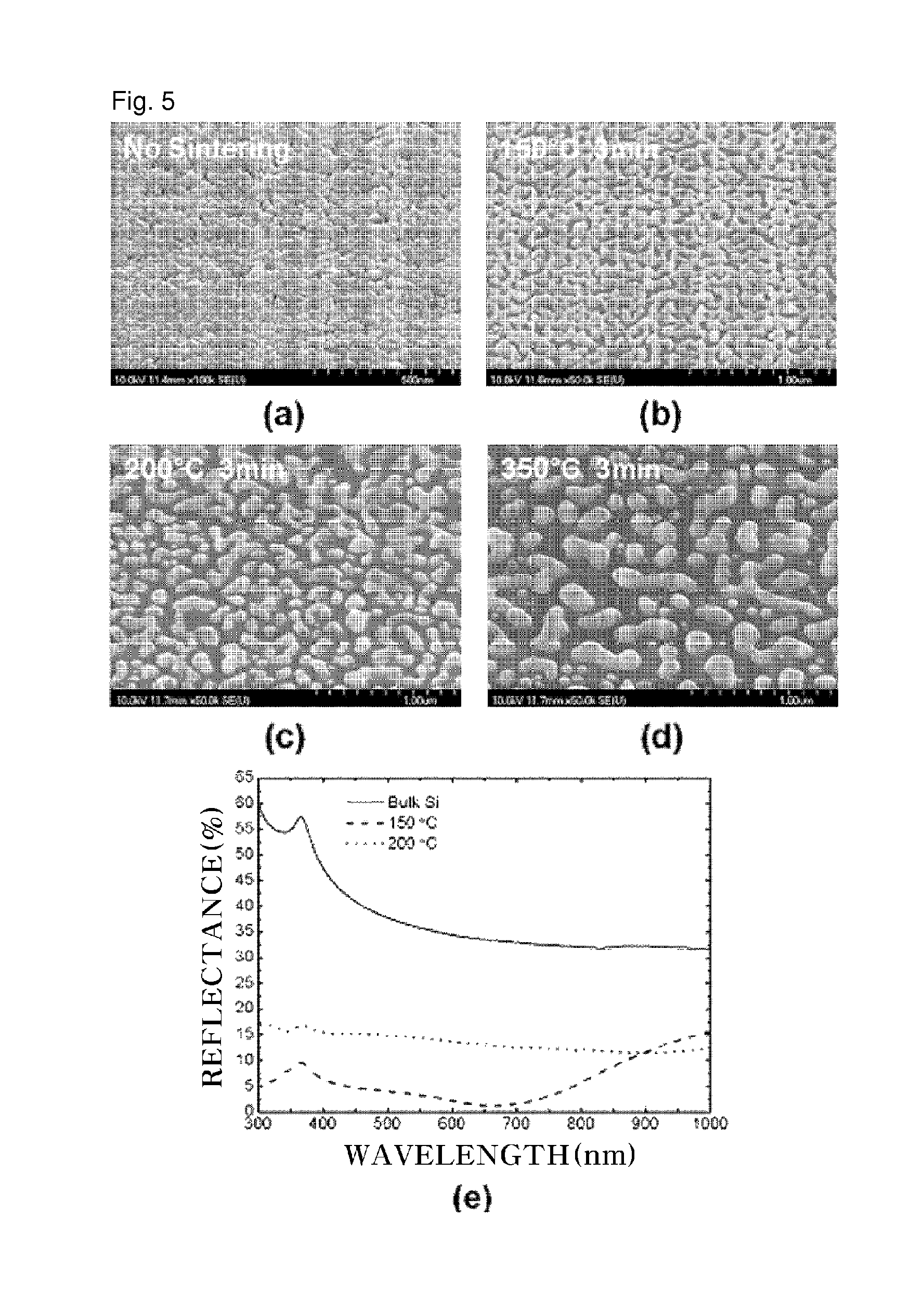Fabricating method of nano structure for antireflection and fabricating method of photo device integrated with antireflection nano structure
a nanostructure and nano-structure technology, applied in the direction of microstructure devices, microstructure technology, coatings, etc., can solve the problems of difficult to reduce the reflectance over a wide wavelength range and a wide incident angle, limited selection of coating materials used as anti-reflective layers, etc., to achieve good luminous efficiency and performance, short process time, and low cost
- Summary
- Abstract
- Description
- Claims
- Application Information
AI Technical Summary
Benefits of technology
Problems solved by technology
Method used
Image
Examples
embodiment 1
[0087]FIGS. 1 through 4 are cross-sectional views illustrating a method of fabricating a nanostructure for antireflection according to a first exemplary embodiment of the present invention.
[0088]Referring to FIG. 1, a solution 110 containing a combination of metal ions 120 with organic or inorganic ions 130 is uniformly coated on a top surface of a prepared semiconductor substrate 100.
[0089]For example, the substrate 100 may be a semiconductor substrate, which is not limited to a silicon (Si) substrate. Other than the semiconductor substrate, the substrate 100 may be any substrate that causes a reaction only in a portion containing metal particles (refer to 125 of FIG. 2) or accelerates the reaction in the portion containing the metal particles 125 more than the remaining portion because the metal particles 125 accelerate a chemical etching reaction.
[0090]Also, the metal ions 120 may be ions of any metal that may be bonded to the organic or inorganic ions 130 and contained in the so...
embodiment 2
[0135]FIGS. 17 through 20 are cross-sectional views illustrating a method of fabricating a nanostructure for antireflection according to a second exemplary embodiment of the present invention.
[0136]Referring to FIG. 17, a buffer layer 200 may be deposited on a top surface of a prepared substrate 100 using, for example, a plasma-enhanced chemical vapor deposition (PECVD) process, a thermal CVD process, or a sputtering process, and a solution 110 containing a combination of metal ions 120 with organic or inorganic ions 130 may be uniformly coated on the buffer layer 200.
[0137]Here, the substrate 100 may be a semiconductor substrate, which is not limited to a Si substrate. Other than the semiconductor substrate, the substrate 100 may be any substrate that allows deposition of the buffer layer 200 on a top surface of the substrate 100 and enables metal particles (refer to 125 of FIG. 18) to accelerate a chemical reaction more in a portion containing the metal particles 125 than in the r...
embodiment 3
[0148]FIGS. 21 through 24 are cross-sectional views illustrating a method of fabricating a nanostructure for antireflection according to a third exemplary embodiment of the present invention.
[0149]Referring to FIG. 21, a solution 110 containing a combination of metal ions 120 with organic or inorganic ions 130 is uniformly coated on a top surface of a prepared semiconductor substrate 100. For example, the substrate 100 may be a semiconductor substrate, which is not limited thereto. Other than the semiconductor substrate, the substrate 100 may be any substrate that causes no reaction in a portion containing metal particles (or metal grains) (refer to 125 of FIG. 22) during a chemical reaction using the metal particles as a mask.
[0150]Since FIG. 22 is the same as described in the first and second embodiments, a detailed description thereof will be omitted.
[0151]Referring to FIG. 23, for example, a chemical etching process may be performed on the top surface of the substrate 100 contai...
PUM
| Property | Measurement | Unit |
|---|---|---|
| thickness | aaaaa | aaaaa |
| depth | aaaaa | aaaaa |
| depth | aaaaa | aaaaa |
Abstract
Description
Claims
Application Information
 Login to View More
Login to View More - R&D
- Intellectual Property
- Life Sciences
- Materials
- Tech Scout
- Unparalleled Data Quality
- Higher Quality Content
- 60% Fewer Hallucinations
Browse by: Latest US Patents, China's latest patents, Technical Efficacy Thesaurus, Application Domain, Technology Topic, Popular Technical Reports.
© 2025 PatSnap. All rights reserved.Legal|Privacy policy|Modern Slavery Act Transparency Statement|Sitemap|About US| Contact US: help@patsnap.com



